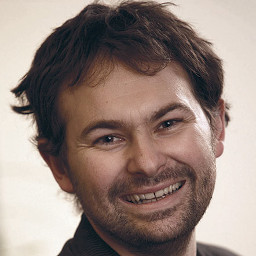Dr Michael Pilling
PhD
Senior Lecturer in Psychology
School of Psychology, Social Work and Public Health

Role
Dr. Michael Pilling has worked Oxford Brookes since September 2007. Prior to this he has worked at the University of Surrey, The Open University, and at the MRC Institute of Hearing Research. He holds a PhD from the University of Surrey.
He is an Associate Editor of the Journal of Cognitive Psychology.
More information can be found on his Google Scholar page.
Areas of expertise
- Visual perception.
- Visual cognition
Teaching and supervision
Supervision
Alfred Veldhuis. PhD Candidate. "The self-reference effect in perception and memory"
Research Students
| Name | Thesis title | Completed |
|---|---|---|
| Dr Sam Bond | A Detailed Exploration into the Constraints on Statistical Learning | 2023 |
Research
Michael Pilling is currently interested in a number of research topics associated with visual cogntiion.
These currently include:
- The effects of visual masking on object processing
- Factors determining the efficiency of comparison processes between VSTM object representations and concurrent vision
- Visual search for dynamic events.
Centres and institutes
Groups
Projects as Co-investigator
- Project [INTERLINKED] Game Component (led by TDE)(01/02/2024 - 30/09/2024), funded by: Counter Terrorism Policing, funding amount received by Brookes: £56,656, funded by: Counter Terrorism Policing
Publications
Professional information
Conferences
Conference Abstracts
- Özgen, Pilling, M. & Davies. (1999). Colour naming and cognition: two tests of the Sapir-Whorf hypothesis
- Pilling, M. & Davies, (2001). Identifying the locus of linguistic influence on colour judgments. Perception ECVP abstract 30.
- Rose, D., Pilling, M. & DeBruyn. (2002). Interocular transfer of second-order tilt aftereffects. Perception ECVP abstract 31.
- Wiggett, A., Pilling, M. & Davies, I.R.L. (2004). The effect of Stroop interference on the categorical perception of colour. Perception ECVP abstract 31.
- Pilling, M. & Gellatly, A. (2003). Contour effects in object substitution masking. Perception ECVP abstract 32,
- Davies, I.R.L., Özgen, E., Pilling, M. & Wiggett, A. (2004). Categorical perception, perceptual magnet and prototype-bias: same or different phenomena? Journal of Vision 3 (9), 250-250
- Davies, I.R.L., Özgen, E., Pilling, M. & Riddett, A. (2004). The relationship between categorical perception and memory bias towards the prototype. Perception ECVP abstract 33.
- Pilling, M, & Gellatly A. (2009). Object substitution masking with a single peripheral dot: evidence of object updating or attentional capture? Perception, 38, ECVP abstract Supplement, page 16
- Pilling, M. & Gellatly, A. (2009). Immediate memory for objects and object colour. Proceedings of the 16th Meeting of the European Society for Cognitive Psychology, page 32.
- Gellatly, A., Guest, D. & Pilling, M. (2009). When and why does masking affect long duration targets? Perception, 38, ECVP Abstract Supplement, page 135
- Guest, D., Gellatly A., & Pilling, M. (2009). Target-mask spatial separation influences the extent of object substitution masking. Perception, 38, ECVP Abstract Supplement, page 15
- Pilling, M. & Gellatly, A, 2010, Visual awareness of objects, their colour and orientation. Perception, 39, ECVP Abstract Supplement, page 78
- Gellatly, A., Guest, D., & Pilling, M. (2010), Object substitution masking of long duration targets - Now you don`t see it, now you do. Perception, 39, ECVP Abstract Supplement, page 118
- Pilling, M. & Gellatly, A. (2010). Visual awareness of objects and object features as revealed by an abrupt cueing task. Proceedings of the 1st Joint conference of the EPS and SEPEX. Page 182
- Pilling, M. & Gellatly, A. (2011). The relationship between visual attention and visual short term memory for objects Proceedings of the 17th Meeting of the European Society for Cognitive Psychology, p 137
- Pilling, M. & Gellatly, A. (2011). Visual attention and knowing about what you ‘see’. British Psychological Society Cognitive Section Annual conference, Keele University, UK.
- Pilling M. Gellatly A. & Argyropoulos I, (2012). Spatial attention does not influence Object Substitution Masking. Perception, 41, ECVP Abstract Supplement, page 134
- Pilling M. (2013) Target and mask preview effects in object substitution masking. Perception, 42, ECVP Abstract Supplement, page 26
- Camp. S. & Pilling, M. Does set-size contribute to masking in Object Substitution Masking? ECVP Abstract Supplement, page84
- Pilling M. (2014). The influence of dimensional attention on perceptual comparisons of features. Perception, 43, ECVP Abstract Supplement, page 99
- Skarratt, P.A., Oltean, B., Hulleman, J. Gellatly, R.H., Pilling, M. & Cole. G.G., (2015). A looming puzzle: What do slope and intercept functions say about attentional prioritisation? Experimental Psychology Society (EPS) winter meeting, Jan., London.
- Pilling, M. (2015). Attentional-set and competition from irrelevant changes in change perception. Experimental Psychology Society (EPS) summer meeting July 2015, University of Lincoln.
- Camp, S. & Pilling, M. (2015). The role of crowding in Object Substitution Masking. ECVP 2015, Liverpool
- Pilling, M. & Guest, D. (2015). Object substitution masking, stimulus noise, and perceptual fidelity. ECVP 2015, Liverpool.
- Pilling, M. (2016). VSTM and comparisons of colour sameness and difference across the same and different spatial locations. The second Experimental Psychology Society (EPS) and Spanish Experimental Psychology Society (SEPEX) joint meeting. July 2016, Oxford University.
- Pilling M. & Barrett, D. (2017). Memory load and feature comparison processes in visual short-term memory. Sept. 2017. BPS Cognitive Section Annual conference, Newcastle University.
- Barrett, D. & Pilling, M. (2017). Temporal and spatial characteristics of dynamic visual search in periodically masked displays. Proceedings of the 19th meeting of the European Society for Cognitive Psychology, Potsdam, Germany
- Pilling M. & Barrett, D. (2017). Visual search for action-controlled and uncontrolled events. Proceedings of the 19th meeting of the European Society for Cognitive Psychology, Potsdam, Germany.
